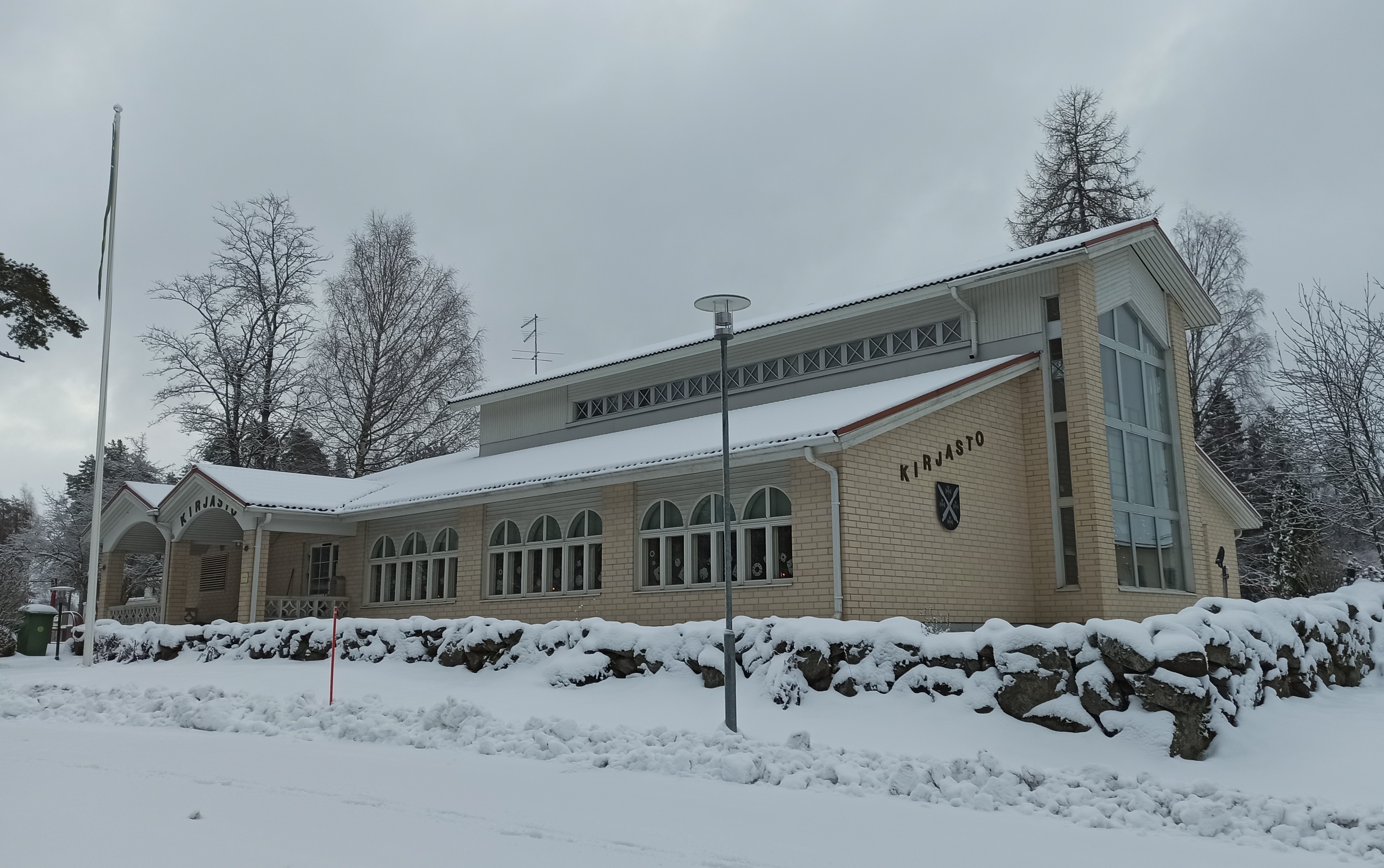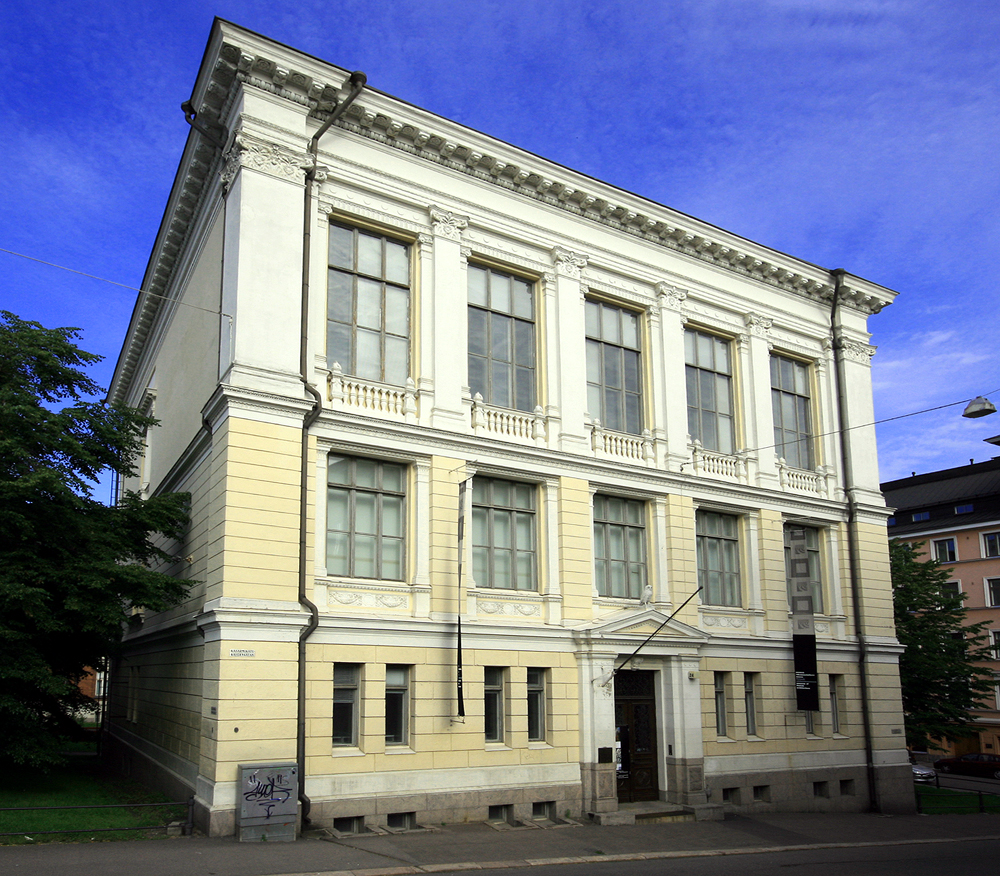|
Enonkoski
Enonkoski () is a municipality of Finland. It is encircled by the city of Savonlinna in the Southern Savonia region. It is the smallest municipality in Southern Savonia in terms of population. History Enonkoski was founded in 1882. Before that it was part of Kerimäki and Heinävesi. The major reason for the foundation of independent parish of Enonkoski happened in 1858. Enonkoski did not have its own church, and on Sundays people had to row to the church to Kerimäki, a parish Enonkoski was part of that time. In 1858 there was a church boat accident in the lake Ylä-Enonvesi, which led to the death of eight people. After that, a Russian businessman and a leader of an Enonkoski glass factory and a sawmill decided to build a church in Enonkoski. He is alleged to have said: "the people in Enonkoski do not anymore have to drown on their trips to the church". The wooden church was built in the next year but it was destroyed in a fire caused by lightning in 1884. A new church made of w ... [...More Info...] [...Related Items...] OR: [Wikipedia] [Google] [Baidu] |
Monastic Protestant Community In Enonkoski
The Monastic Community of Enonkoski is the only Evangelical Lutheran "monastery" in Finland. It is located in the village of Ihamaniemi in the Enonkoski municipality. The monastery building previously served as elementary school. The monastery was founded in 1994. There are currently no permanent residents in the monastery. In 2017 the Evangelical Lutheran Diocese of Mikkeli The Diocese of Mikkeli (, ) is one of nine dioceses in the Evangelical Lutheran Church of Finland. It was founded in 1897 in the town of Savonlinna. Later, in 1924 the episcopal see was moved to Viipuri, but after Finland lost the city to the S ... took an active role in the management of the monastery programmes to organize retreats and promote prayer and Christian lifestyle. At the initiative of the bishop of Mikkeli Seppo Häkkinen, the synod of the Evangelical Lutheran Church of Finland decided to grant a three-year allowance for a recruiting a pastor to promote retreat activity and spiritual guida ... [...More Info...] [...Related Items...] OR: [Wikipedia] [Google] [Baidu] |
Southern Savonia
South Savo (or Southern Savonia; fi, Etelä-Savo; sv, Södra Savolax) is a region in the south-east of Finland. It borders the regions of North Savo, North Karelia, South Karelia, Kymenlaakso, Päijät-Häme, and Central Finland. The total area of South Savo is 18,768.33 km2 (7,246.5 sq mi), with a population of 153,738 (2011). South Savo is located in the heart of the Finnish lake district, and contains Lake Saimaa, the largest lake in Finland. The three major towns in the region are Mikkeli, Savonlinna and Pieksämäki. Historical provinces ''For history, geography and culture see: Savonia'' Municipalities South Savo includes 12 municipalities listed below (towns marked in bold). * Enonkoski **Population: * Hirvensalmi **Population: * Juva **Population: * Kangasniemi **Population: * Mikkeli (''S:t Michel'') **Population: * Mäntyharju **Population: * Pertunmaa **Population: * Pieksämäki **Population: * Puumala **Population: * Rantasalmi **Populati ... [...More Info...] [...Related Items...] OR: [Wikipedia] [Google] [Baidu] |
Savonlinna
Savonlinna (, , ; sv, Nyslott, lit=New Castle) is a town and a municipality of inhabitants in the southeast of Finland, in the heart of the Saimaa lake region, which is why the city is also nicknamed the "Capital of Saimaa". Together with Mikkeli, it is one of the largest towns in the South Savonia region and one of the concentrations in the region's hospital districts. The town is internationally known for its medieval St. Olaf's Castle and the annual Savonlinna Opera Festival. Its surrounding the enclaved municipality of Enonkoski. History The city was founded in 1639, based on Olavinlinna castle (''St. Olaf's Castle''). The castle was founded by Erik Axelsson Tott in 1475 in an effort to protect Savonia and to control the unstable border between the Kingdom of Sweden and its Russian adversary. During the Russo-Swedish War (1741–1743), the castle was captured by Field-Marshal Peter Lacy. It was held by Russia between 1743 and 1812, when it was granted back to Finlan ... [...More Info...] [...Related Items...] OR: [Wikipedia] [Google] [Baidu] |
Ylä-Enonvesi
Ylä-Enonvesi is a medium-sized lake in the Vuoksi main catchment area. It is located in the Southern Savonia region in Finland.Ylä-Enonvesi in the Jarviwiki Web Service Retrieved 2014-03-04. The lake is important area of . See also *List of lakes in Finland
There are 187,888 lakes in Finland larger than 5 ares (500 square metres / 5,382 sq.ft.) Most are small, but there are 309 lakes or reservoirs larger than 10 km². They are liste ...
[...More Info...] [...Related Items...] OR: [Wikipedia] [Google] [Baidu] |
Antti Loikkanen
Antti Olavi Loikkanen (born 15 April 1955 in Enonkoski, Etelä-Savo) is a Finnish former middle-distance and endurance runner. Loikkanen was one of Finland's most successful 800 meter and 1500 meter runners in the beginning of the 1980s. His greatest achievements were in indoor athletics competitions. Loikkanen was the Finnish champion in 800 metres in 1979 and in the 1500 metres in 1980. In indoor competitions, he won the 1500 metres (in 1978), the 800 metres (1981) and the 1500 metres (1985). His best result in outdoor track competitions was a 5th place in the 1500 metres race in the 1978 European Championships in Athletics in Prague. In the 1978 European Indoor Championships in Athletics in Milan, Loikkanen won gold with a national record time of 3:38.16. He won bronze in the same event at the 1982 and 1983 Championships, was 4th in 1979 and 1984, and 6th in 1985. Loikkanen also participated in the Olympic Games in Montreal 1976, Moscow 1980 and Los Angeles 1984 an ... [...More Info...] [...Related Items...] OR: [Wikipedia] [Google] [Baidu] |
Savonranta
Savonranta is a former municipality of Finland. It became part of Savonlinna in early 2009. It is located in the province of Eastern Finland and is part of the Southern Savonia region. The municipality had a population of 1,263 (2003) and covered an area of 568.59 km² of which 182.55 km² is water. The population density was 3.3 inhabitants per km². The municipality was unilingually Finnish. Kolovesi National Park, home of the Saimaa Ringed Seals – one of the most endangered seals in the world, is located in Savonranta and its neighbour municipalities Enonkoski and Heinävesi. Notable residents * Aino Kuusinen (1886-1970) - Communist politician and wife of Otto Wille Kuusinen Otto Wilhelm "Wille" Kuusinen (; russian: О́тто Вильге́льмович Ку́усинен, Otto Vilgelmovich Kuusinen; 4 October 1881 – 17 May 1964) was a Finnish-born Soviet communist and, later, Soviet politician, literary his ... * Toivo Turtiainen (1883-1920) - ... [...More Info...] [...Related Items...] OR: [Wikipedia] [Google] [Baidu] |
Enonkosken Pyrintö
Enonkosken Pyrintö is a volleyball club from Enonkoski, Finland. The men's team of Pyrintö is playing in the second highest tier of Finnish volleyball, Southern group of ''1-sarja''. Team's coach is Bulgarian Todor Marinov. Pyrintö was founded in 1919. Formerly it was a multi-sports club. The most famous and successful athlete of the club is runner Antti Loikkanen Antti Olavi Loikkanen (born 15 April 1955 in Enonkoski, Etelä-Savo) is a Finnish former middle-distance and endurance runner. Loikkanen was one of Finland's most successful 800 meter and 1500 meter runners in the beginning of the 1980s. .... Current squad *Mika Nenonen *Petri Siitonen *Jussi Lautiainen *Antti Pölönen *Mika Kettunen *Eetu Pennanen *Kalle Heikkinen *Juuso Paananen *Teemu Saarinen *Markus Tammaru In Sprint 2010 Saimaa Volley players Kirill Borichev and Markus Väisänen play also for EnPy. External links Official homepage Finnish volleyball clubs {{Finland-sport-stub ... [...More Info...] [...Related Items...] OR: [Wikipedia] [Google] [Baidu] |
Magnus Schjerfbeck
Magnus Schjerfbeck (24 July 1860 — 8 May 1933) was a Finnish architect and architectural historian. Education Schjerfbeck studied at the Polytechnical Institute of Finland (later Helsinki University of Technology, now part of Aalto University, graduating in 1881. Career He worked in the Board of Public Building (''Yleisten rakennusten ylihallitus''; later ''Rakennushallitus'', now Senate Properties) for most of his career, including as their lead architect from 1914 to 1926. In that role, Schjerfbeck made a significant contribution to the design and construction of public buildings of early 20th-century Finland. Works His more notable works and projects include: *The Scientific Societies' Building (''Tieteellisten seurain talo'') in Helsinki, now housing the Museum of Finnish Architecture *Hospitals and university clinics in eg. Helsinki, Oulu, Joensuu, Sortavala, Kajaani, Tampere, Kuopio and Vyborg * Alexander III's fishing lodge at Langinkoski *Restoration of Turk ... [...More Info...] [...Related Items...] OR: [Wikipedia] [Google] [Baidu] |
Lake
A lake is an area filled with water, localized in a basin, surrounded by land, and distinct from any river or other outlet that serves to feed or drain the lake. Lakes lie on land and are not part of the ocean, although, like the much larger oceans, they do form part of the Earth's water cycle. Lakes are distinct from lagoons, which are generally coastal parts of the ocean. Lakes are typically larger and deeper than ponds, which also lie on land, though there are no official or scientific definitions. Lakes can be contrasted with rivers or streams, which usually flow in a channel on land. Most lakes are fed and drained by rivers and streams. Natural lakes are generally found in mountainous areas, rift zones, and areas with ongoing glaciation. Other lakes are found in endorheic basins or along the courses of mature rivers, where a river channel has widened into a basin. Some parts of the world have many lakes formed by the chaotic drainage patterns left over from the la ... [...More Info...] [...Related Items...] OR: [Wikipedia] [Google] [Baidu] |
Association Football
Association football, more commonly known as football or soccer, is a team sport played between two teams of 11 players who primarily use their feet to propel the ball around a rectangular field called a pitch. The objective of the game is to score more goals than the opposition by moving the ball beyond the goal line into a rectangular framed goal defended by the opposing side. Traditionally, the game has been played over two 45 minute halves, for a total match time of 90 minutes. With an estimated 250 million players active in over 200 countries, it is considered the world's most popular sport. The game of association football is played in accordance with the Laws of the Game, a set of rules that has been in effect since 1863 with the International Football Association Board (IFAB) maintaining them since 1886. The game is played with a football that is in circumference. The two teams compete to get the ball into the other team's goal (between the posts and under ... [...More Info...] [...Related Items...] OR: [Wikipedia] [Google] [Baidu] |
Fish
Fish are aquatic, craniate, gill-bearing animals that lack limbs with digits. Included in this definition are the living hagfish, lampreys, and cartilaginous and bony fish as well as various extinct related groups. Approximately 95% of living fish species are ray-finned fish, belonging to the class Actinopterygii, with around 99% of those being teleosts. The earliest organisms that can be classified as fish were soft-bodied chordates that first appeared during the Cambrian period. Although they lacked a true spine, they possessed notochords which allowed them to be more agile than their invertebrate counterparts. Fish would continue to evolve through the Paleozoic era, diversifying into a wide variety of forms. Many fish of the Paleozoic developed external armor that protected them from predators. The first fish with jaws appeared in the Silurian period, after which many (such as sharks) became formidable marine predators rather than just the prey of arthropods. ... [...More Info...] [...Related Items...] OR: [Wikipedia] [Google] [Baidu] |





